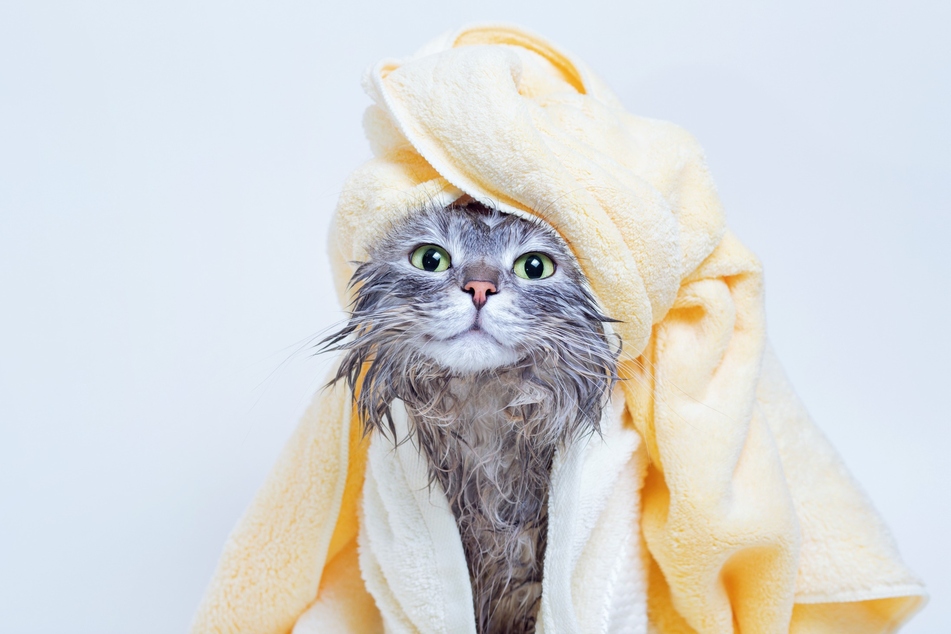How do I give my cat a bath and when should I do it?
Personal grooming is always a priority for cats, and normally they can look after themselves. So how often do they actually need a bath?

It's fair to say most cats don't enjoy splashing around in the water as much as us humans.
Our feline friends usually take good care of themselves, so aside from being unpleasant, frequent bathing can lead to damage to the protective layer of their skin.
But sometimes – particularly when if your cat spends a lot time outdoors – you'll have to lend a helping hand.
Here's how to know when it's time to give cats a bath, how to go about it with a minimum of fuss, and what to avoid at all times!
When should you give your cat a bath?
Baths aren't usually necessary, since your cat is really good at keeping itself clean.
But when we're talking about outdoor cats, there's a lot that not even they can get out of their fur. Think traces of paint, coal dust, or tree sap. Then there's poop, which can end up sticking to coats.
In these cases, a special cat shampoo is called for. Don't just use your own products, as our pets have very different needs.
Ask a professional what shampoo is best for your breed of cat.
How do you give your cat a bath?
To make sure everything goes quickly and smoothly, have the shampoo, a towel and treats laid out ready in the bathroom.
Whether bathing in the sink or in a baby bathtub in the shower, it is best if the cat is used to standing in water from an early age.
This can be done by gradually increasing the amount of water, at first merely covering the paws, until it reaches the animal's tummy at the most.
When bathing your cat, be very careful not to submerge it completely, and don't wash their ears and face. Rinse with a gentle, lukewarm stream so that it doesn't lick off any shampoo residue when it cleans itself later.
How do you dry your cat after a bath?

Now the worst is over as many cats actually enjoy being rubbed dry with a soft cloth.
The coat should be completely dry before you release your pet again, and you might need the help of a hairdryer. Get the cat used to the noise in small steps, and stroke the coat while you are blow-drying to make sure the air flow is not too hot. Be careful not to expose the bathed animal to drafts immediately afterward.
Slow movements and words of encouragement will help throughout the entire bathing procedure, and a treat at the end will make the cat remember the whole process positively.
Who knows, maybe bath time could even become something it looks forward too!
Cover photo: 123RF/natashazakharova1








